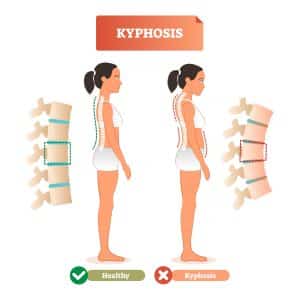Why You Might Be A Good Candidate For Kyphoplasty
June 7, 2019

The procedure involves inserting a balloon in a fractured spinal vertebrae and filling the space with bone cement. The procedure usually targets the thoracic region of the spine in the T1 through T12 vertebrae. It can also be used in the lumbar region in L1 through L5. Kyphoplasty offers short-term and long-term results. Patients report a significant decrease in back pain, improvement in mobility, increased quality of life and height restoration.”
Why You Might Need Kyphoplasty
A common medical condition that leads to kyphoplasty is osteoporosis, a disease that involves bones becoming fragile. As people age, their bones lose calcium and other minerals. The vertebrae can then fracture, and the spine shortens, causing a hump to form in the back. This condition is known as kyphosis.
Fractures caused by weakening of the vertebrae are called compression fractures. The fractures may cause no initial problems, but later they can cause pain to come on slowly, often worsening with walking. Over time, the fractures often lead to severe back pain.
The pain caused by compression fractures is acute. It can take weeks or months to ease. The fractures can cause a person to lose as much as six inches over time. The pain can result in tingling, numbness, difficulty walking, and loss of function in the bowels and bladder.
It’s important to note that not all patients qualify for kyphoplasty. You are eligible for the procedure if you suffer from painful vertebral fractures caused by osteoporosis, bone marrow cancer, metastatic cancer or benign vascular tumors.
You do not qualify for kyphoplasty if your compression fractures are stable and not painful. Kyphoplasty also cannot treat established spinal deformities. Other conditions that make you unsuitable for the procedure include bone infections, tumors in the spinal canal, bleeding disorders, and allergies to the medications used during the surgery.
What To Expect With Kyphoplasty
During the surgery, the surgeon makes a small incision in your back, inserting a hollow needle into the fractured vertebra through this opening. A balloon is inserted through the needle, and the surgeon expands the collapsed vertebra, returning it to a normal height. The balloon is then removed, and the space is filled with bone cement that solidifies and steadies the spine. The procedure takes approximately one hour for each vertebra. Kyphoplasty can be performed either under general anesthesia or local anesthesia.
After the procedure, you will be kept under observation for a day. The doctor may release you that day or the next day. For the first few hours after the surgery, movement is restricted. After that, you can sit up and slowly start walking. Once home, avoid exerting yourself for the next few weeks. You may be prescribed an exercise program to follow during recovery.
Talk to your doctor at Southside Pain Specialists if you think you might be a good candidate for this procedure. We would love to help you restore your height, health, and ability to walk if you are struggling in those areas.
Southside Pain Specialists is your one-stop shop for pain management
With a multitude of pain relief options tailored to your specific needs, Southside Pain Specialists follow the standards of the American Society of Interventional Pain Physicians, The American Board of Pain Medicine and the International Spinal Injection Society and works hard to provide patients comprehensive, caring pain relief when they need it most. Check out our website or contact us today at 205.332.3155 to learn more.
